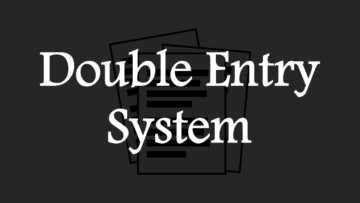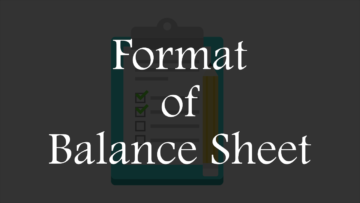There are many principles, concepts, rules, etc. in accounting that are used to manage economic transactions and one of those concepts is the double entry system. According to the double entry system, every transaction is divided into two parts called debit and credit. The transaction is divided into debit and credit parts so that the accounting equation can be followed.
| A = E + L E = A – L L = A – E | Assets = Equity (Owner’s Share) + Liability Equity (Owner’s Share) = Assets – Liability Liability = Assets – Equity (Owner’s Share) |
According to the accounting equation, assets are equal to liabilities or vice versa because liabilities also include the owner’s share. The accounting equation will not work unless a proper accounting system is used, so in most organizations, transactions are recorded according to the double entry system to follow the accounting equation.

Table of Contents
What is Double Entry System?
Meaning of Double Entry System
A double entry system is a concept or system according to which every transaction is divided into two sides debit and credit. It is also recognized in Generally Accepted Accounting Principles (GAAP) because it provides a fair system. With its help, transactions are managed because a single person cannot do the transaction, which requires at least two persons, and its principle is also based on this.
In today’s time, most organizations use the double entry system to record the transactions because recording the transactions with its help makes it easier to prepare financial statements, prepare accounting reports, detect accounting errors, etc. because the proper system is used in it. It also makes it easier to detect fraud, manipulation, etc.
Definition of Double Entry System
According to William Pickles – “The Double Entry System seeks to record every transaction in money or money’s worth in its dual aspect. The receipt of a benefit by one account and the surrender of alike benefit by another account, the former entry being to be debit of the account receiving and the latter to the credit of the account surrendering.”
According to J.R. Batliboi – “Every business transaction has a two-fold effect and that it affects two accounts in opposite directions and if a complete record is to be made of each such transaction it would be necessary to debit one account and credit another account. It is this recording of the two-fold effect of every transaction that has given rise to the term Double Entry.”
Features of Double Entry System
Following are the features of double entry system:
1. Concept:
It is a concept used to record transactions. In this, all financial transactions are divided into two sides so that further accounting processes can be done. Out of the two sides, one side increases something and the other side decreases something or in other words, both sides are opposite to each other.
2. Debit and Credit:
In this, the transaction is divided into two sides, one of which is the debit side, and the other is the credit side, but which side will be debit and which side will be credit, it depends on the rules of debit and credit such as:
| Personal Account | – Debit – The Receiver – Credit – The Giver |
| Real Account | – Debit – What Comes In – Credit – What Goes Out |
| Nominal Account | – Debit – All Expenses/Losses – Credit – All Income/Gains |
3. Equal:
In this both the parties are equal because what one party gives, the other party gets the same or in other words, debit is always equal to credit and credit is always equal to debit. For example, if the purchase account is debited then the cash account or party account is credited, and similarly, if the sales account is credited then the cash account or party account is debited.
4. Systematic:
It is a systematic concept or system as in this all the transactions are recorded in dual aspects which follows the accounting equation and in this the rule of debit and credit is used to record the transactions which also helps in making the complete record of the transactions.
5. Error Reduction:
Using the double entry system also helps in reducing errors because in it all the transactions are recorded on the debit and credit side with rules and even if any error occurs, it helps in detecting and correcting it.
6. Help to Management:
It helps the management in preparing financial reports such as trading account, profit and loss account, balance sheet, etc. because in it all the transactions are recorded on the debit and credit side which helps in equating assets and liabilities and following the accounting equation.
Read Also:
QNA/FAQ
Q1. What is Double Entry System?
Ans: A double entry system is a concept or system according to which every transaction is divided into two sides debit and credit.
Q2. Is double entry system based on dual aspect?
Ans: Yes, the double entry system is based on a dual aspect as in this the transaction is divided into two sides known as the debit side and credit side.
Q3. Are both sides equal in double entry system?
Ans: Yes, in a double entry system, both sides are equal because as much as there is a debit, there is the same amount of credit, or in other words, there is a 1:1 ratio.
Q4. Does the double entry system follow the accounting equation?
Ans: Yes, the double entry system follows the accounting equation.
Q5. Write the features of double entry system?
Ans: Following are the features of double entry system:
1. It is a concept or system.
2. It follows the accounting equation.
3. It is based on a dual aspect.
4. It is systematic.
5. It helps the management in preparing financial statements.
6. It helps in reducing and detecting errors.
7. In this, the transaction is divided into two parts.
8. In this, there is a debit side on one side and a credit side on the other side.
9. In this both sides are equal.
10. In this, the rule of debit and credit applies.













